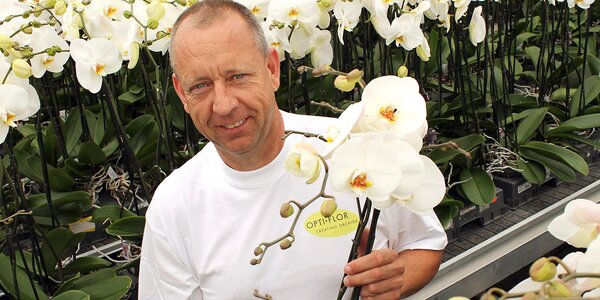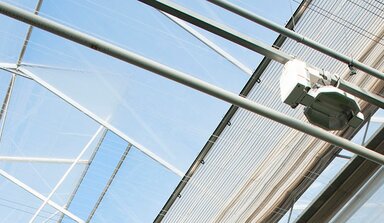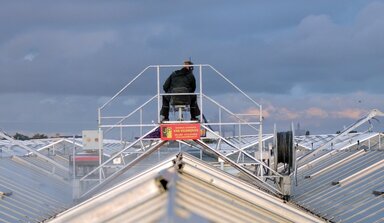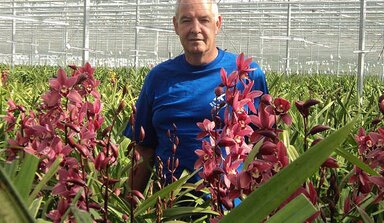Phalaenopsis and ReduFuse
Orchid grower Opti-flor was able to use less artificial light at its Grandi-flora branch after ReduFuse was applied. The screen was also closed less often.
Cultivation manager Ruud Duijvestijn was initially sceptical about ReduFuse. “I’d seen that diffuse glass is advantageous for a crop, but I didn't expect the same effect could be achieved with a coating. But I changed my mind after following the experiences of a colleague. Now I have a very good feeling about it.”
Duijvestijn heads the cultivation at the nursery in Monster (The Netherlands) where the large flowering Phalaenopsis type, Grandi-flora, is produced. Opti-flor has four additional branches in the Westland area of the Netherlands, each growing their own type of Phalaenopsis. The company has a total of 13.5 ha of glass greenhouses.

Ruud Duijvestijn
More natural light
“We used ReduFuse here for the first time last year. It was applied in February. Mid-May we applied ReduSol over the top. In previous years we had already shaded on 1 April; therefore this was postponed by six or seven weeks. We were able to make more use of natural light. As a result we used less artificial lighting, which is a distinct advantage,” he says.
Although the number of hours of artificial lighting decreased, the plants received a greater amount of light. This was shown by continuous monitoring using photometers. At that point Duijvestijn didn’t notice that the crop was benefitting. “But I expected a better flower induction and better quality: more buds and more branching,” he says.
Energy savings
The higher solar radiation did increase the need for cooling in the period before ReduSol was applied to the roof. As a result the cultivation manager is considering using ReduFuse IR this year. Another Opti-flor branch already has some experience with this. Nevertheless, the net result was a saving on energy: Less artificial lighting yields much more benefit than the extra energy that the cooling costs. “Last year, period 5 – the month of May – was very different to other years. It was much darker. Even so, we used less lighting. These are definite figures that indicate the positive effect of ReduFuse.”
Screening strategy
He also used the screens somewhat less. That was mainly a result of the continuous expansion of knowledge about Phalaenopsis cultivation. The plant can withstand more light than previously thought, providing you pay good attention to plant vitality. “As a result we are changing the screen strategy. We’ll be exploring the limits. This in itself has nothing to do with the coating, but ReduFuse does help make this possible,” he says. The coating was removed around 1 September. This year there’s no doubt that ReduFuse will be applied to the roof. The only point of discussion is whether this will be the ‘normal’ or IR-variety.


